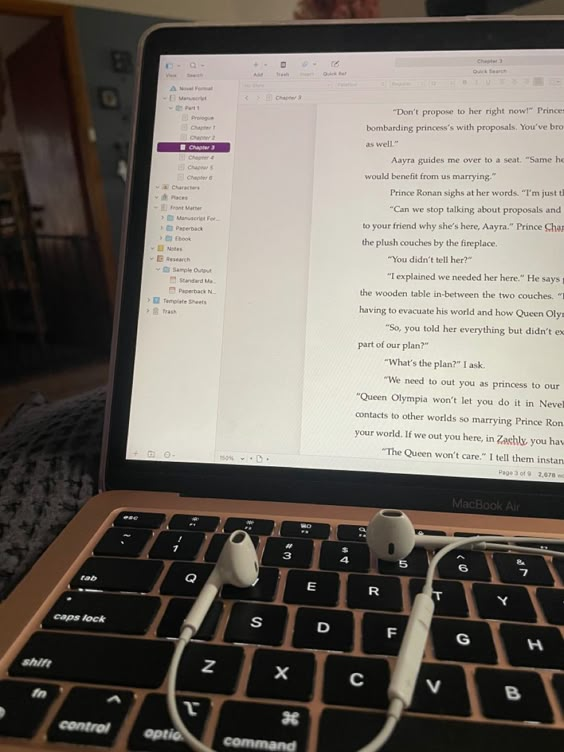

Essay writing is a fundamental skill that students and professionals alike must master. A well-structured essay not only conveys ideas clearly but also engages the reader effectively. From crafting a strong thesis statement to organizing supporting arguments, the process of essay writing encompasses various techniques that can significantly enhance one’s ability to communicate.
Understanding the different types of essays and their specific purposes can further guide the writing approach. Whether it’s a persuasive, analytical, or descriptive essay, recognizing the intent behind each form allows for tailored strategies that resonate with the intended audience.
Additionally, attention to detail during the writing process can elevate the quality of an essay. Proper research, clear language, and thorough editing ensure that the final piece is polished and impactful. For students facing tight deadlines or struggling with structure, using a reliable essay writing service can provide the guidance and support needed to produce high-quality work.
Key Takeaways
- A clear structure is essential for effective essay writing.
- Tailoring the approach based on the essay type enhances communication.
- Careful editing and presentation improve overall quality.
Understanding the Essay Structure
An effective essay structure is fundamental for clear communication of ideas. It consists of several key components that work together to support the writer’s argument and ensure clarity for the reader.
Thesis Statements
A thesis statement serves as the essay’s central argument or claim. It is typically positioned at the end of the introduction. A strong thesis is specific, debatable, and reflects the essence of the essay’s argument.
To create an effective thesis statement, avoid vague language. Instead, use clear and direct sentences. For instance, instead of saying, “Many people think…”, it’s better to assert, “Common misconceptions about climate change hinder effective policy-making.”
A well-crafted thesis not only guides the writer’s direction but also sets expectations for the reader regarding the essay’s scope and focus.
Paragraph Development
Each paragraph in an essay should aim to develop a specific point that supports the thesis statement. Start with a topic sentence that clearly indicates the paragraph’s main idea. This should be followed by evidence, analysis, and examples to substantiate the claim.
Incorporating various types of evidence, such as statistics, quotes, or anecdotes, can strengthen the argument. Cutting unnecessary filler phrases can enhance clarity, allowing the reader to grasp the essential points quickly.
Lastly, ensure that each paragraph transitions smoothly into the next, maintaining coherence throughout the essay.
Transitions and Flow
Transitions are crucial for guiding the reader through the essay’s arguments. Effective transitions clarify the relationship between ideas and paragraphs. Words and phrases such as “furthermore,” “in addition,” or “on the other hand” can help establish logical connections.
The flow of an essay should feel natural and cohesive. By using a consistent tone and maintaining a clear structure, the writer can enhance readability.
When crafting transitions, it’s essential to link ideas rather than merely reposition them. This approach helps maintain the reader’s engagement and clarity throughout the essay.
Essay Types and Purposes


Different types of essays serve distinct purposes. Understanding these categories can help in choosing the right approach for the intended message or academic requirement.
Expository Essays
Expository essays aim to explain a topic clearly and logically. They often include facts, statistics, and examples to provide a comprehensive view.
Typically structured with an introduction, body paragraphs, and a conclusion, these essays should maintain an objective tone.
Writers must focus on delivering information without inserting personal opinions. Common forms include compare and contrast essays, how-to essays, and cause and effect essays.
Descriptive Essays
Descriptive essays focus on painting a vivid picture of a person, place, object, or experience using sensory details.
The objective is to engage the reader’s imagination and emotions, immersing them in the subject matter.
Writers utilize figurative language, adjectives, and adverbs to create strong imagery. A strong thesis statement is essential, guiding the reader through the description with clarity.
Structurally, these essays may vary, but they usually consist of an introduction, detailed body paragraphs, and a conclusion that encapsulates the overall experience.
Narrative Essays
Narrative essays tell a story from a specific point of view, often reflecting the author’s personal experiences.
This type encourages a connection between the writer and the reader through storytelling.
They typically incorporate elements of plot, character, and setting. The narrative should unfold chronologically or thematically, maintaining clarity throughout.
These essays allow for creativity and personal tone, yet maintaining coherence is key to successfully conveying the story’s message.
Argumentative Essays
Argumentative essays strive to convince readers of a particular viewpoint.
Writers present arguments backed by evidence, addressing counterarguments to strengthen their position.
The structure generally includes an introduction with a clear thesis statement, body paragraphs supporting the argument, and a conclusion reinforcing key points.
Persuasive techniques, such as emotional appeals and logical reasoning, enhance the overall argument’s effectiveness.
Choosing credible sources is crucial for presenting a compelling case.
Persuasive Essays
Persuasive essays aim to influence the reader’s opinion on a specific issue.
They rely on emotional appeals, logic, and ethics to persuade the audience.
Structurally similar to argumentative essays, they also feature an introduction, body paragraphs, and a conclusion.
The key difference lies in the focus; persuasive essays may employ more subjectivity and call for action.
Writers must understand the audience’s values, using techniques like rhetorical questions and analogies to strengthen their argument.
Research and Analysis
Research and analysis form the backbone of effective essay writing. Engaging in deep inquiry and critical assessment of sources ensures that arguments are well-supported and credible. This section explores essential aspects of critical thinking, evaluating sources, and organizing data effectively.
Critical Thinking Skills
Critical thinking skills enable a writer to assess arguments logically and independently. This involves analyzing assumptions, evaluating evidence, and discerning biases. A writer should ask essential questions about the information at hand:
- What is the main argument?
- Are there alternative viewpoints?
- What evidence supports the claims made?
By applying these skills, a writer enhances their ability to form coherent arguments. This analytical approach leads to stronger conclusions and more persuasive writing. Engaging critically with content also helps identify gaps in reasoning, allowing for a more robust exploration of the topic.
Source Evaluation
Evaluating sources is crucial to maintaining integrity and accuracy in writing. Reliable sources must be distinguished from less credible ones. Key factors to consider include:
- Authority: Who is the author? Do they have credentials?
- Accuracy: Is the information supported by evidence?
- Currentness: Is the source up-to-date and relevant?
- Bias: Does the source exhibit any partiality?
A systematic approach to evaluating sources ensures that claims are founded on solid evidence. Writers should keep a diverse range of sources to enrich their arguments and provide balance.
Data Organization
Effective organization of data enhances clarity and comprehension. Writers should categorize information to improve the flow of arguments. Techniques for organizing data include:
- Outlining: Creating a structured plan before writing.
- Thematic grouping: Placing related information together.
- Using visual aids: Incorporating tables or charts for complex data.
These strategies help present information logically and coherently. Clear organization supports the reader’s understanding and emphasizes critical points in the essay, making the analysis more impactful.
Writing Process and Strategies
Effective essay writing involves a structured approach that includes various stages, such as brainstorming, outlining, drafting, and revising. Each stage has specific techniques that can enhance the quality of the final essay.
Brainstorming Techniques
Brainstorming is a critical first step in essay writing. It allows the writer to generate ideas without constraints. Techniques such as mind mapping and free writing can be effective.
Mind Mapping: This visual technique involves writing a central idea in the middle of the page and branching out related concepts. This method helps in organizing thoughts and identifying connections between ideas.
Free Writing: This approach encourages the writer to write continuously for a set time without worrying about grammar or structure. The goal is to unlock creativity and discover unexpected ideas.
Listing: Creating a list of ideas or arguments related to the essay topic can serve as a straightforward way to develop content.
When seeking professional assistance with academic assignments, connecting with an experienced essay writer can provide valuable guidance throughout the research and drafting phases.
Choosing the right brainstorming technique depends on personal preference and the essay’s requirements.
Outline Creation
Once the ideas are generated, creating an outline is the next crucial step. An outline serves as a roadmap for the essay and helps in effectively organizing thoughts.
Structure: An outline typically follows a hierarchical structure, dividing content into main points and subpoints. This ensures all necessary elements are included.
Thesis Statement: Identifying the thesis statement early and placing it at the top of the outline provides clarity. It guides the development of arguments and evidence.
Flexibility: An outline should be flexible. Adjustments may be necessary as the essay evolves during drafting.
This organized approach greatly assists in maintaining focus and coherence throughout the writing process.
Drafting Tips
Drafting is where ideas come to life. It’s important to prioritize clarity and flow during this stage.
Writing Without Editing: During the first draft, writers should focus on getting ideas down rather than correcting errors. This helps preserve the flow of thoughts.
Paragraph Structure: Each paragraph should begin with a clear topic sentence, followed by supporting sentences that elaborate on the main idea. This enhances readability.
Transitions: Incorporating transitional phrases between paragraphs ensures smooth movement from one idea to another. This maintains the essay’s overall coherence.
Regularly revisiting the thesis and ensuring each paragraph aligns with it is crucial for staying on topic.
Revision Methods
Revision is an essential part of the writing process, aimed at improving the quality of the essay. Effective methods include multiple readings and seeking feedback.
Multiple Readings: First, review for content—ensuring arguments are clear and supported. Next, check for organization and flow before focusing on grammar and punctuation.
Peer Review: Discussing the essay with peers can provide fresh perspectives. Feedback helps identify strengths and areas for improvement.
Reading Aloud: Reading the essay out loud can reveal awkward phrasing or unclear sentences. This technique helps the writer hear the essay’s rhythm.
Through systematic revision, writers can significantly enhance the clarity and impact of their essays.
Language and Style
Effective essay writing demands attention to language and style. Each component plays a critical role in conveying ideas clearly and persuasively.
Tone and Voice
Tone and voice shape how an essay’s message is perceived. The writer’s tone can range from formal to informal, depending on the audience and purpose.
Formal tone is often suitable for academic essays, involving precise language and objective viewpoints. In contrast, a conversational tone may engage audiences in personal reflections or creative writing.
Choosing the right voice enhances the essay’s authenticity. Writers should maintain consistency to avoid confusing readers. A distinct voice helps in forming a connection with the target audience, making the piece more relatable and engaging.
Sentence Structure
Sentence structure influences readability and flow. Varying sentence lengths and types keeps the reader engaged.
Short sentences can deliver powerful statements and enhance clarity. Meanwhile, longer sentences allow for complex ideas and nuances.
Writers should mix simple, compound, and complex sentences to create rhythm in their writing. Using transition words aids the flow between sentences, guiding the reader through the argument.
Breaking up lengthy paragraphs into shorter ones enhances comprehension as well, making it easier for readers to absorb information.
Word Choice and Vocabulary
Word choice significantly impacts clarity and tone. Writers should select words that precisely express their ideas without ambiguity.
Using specific terminology related to the subject matter increases credibility. For example, instead of saying “big,” a writer may use “substantial” or “considerable” for more impact.
It is also crucial to avoid jargon unless it is appropriate for the audience. An extensive vocabulary can enhance writing, but clarity should never be sacrificed for complexity.
Employing active voice can make sentences stronger. Instead of saying “Mistakes were made,” a more effective construction would be, “The committee made mistakes.”
Grammar and Mechanics
Correct grammar and mechanics are foundational for effective writing. Errors can distract readers and undermine the writer’s credibility.
Punctuation plays a vital role in conveying meaning. For instance, commas can clarify complex sentences, while periods indicate complete thoughts.
Maintaining subject-verb agreement and correct pronoun usage are essential for grammatical accuracy. Writers should proofread their work to catch mistakes that may detract from their message.
Spelling also matters; errors can lead to misinterpretation. Tools like spell check can assist, but careful proofreading is still necessary to ensure accuracy.
Adhering to standard formats, such as MLA or APA, contributes to the professionalism of an essay. Consistency in formatting builds trust with the reader and establishes credibility.
Conclusions


Conclusions play a crucial role in solidifying the arguments presented in an essay. They provide a final opportunity to emphasize key points and leave a lasting impression on the reader.
Summarizing Main Points
In this part, the main arguments of the essay should be concisely restated. This helps to reinforce what has been discussed and reminds the reader of the essay’s core message.
- Key Themes: Highlight the primary themes or arguments presented.
- Evidence Reminder: Briefly touch on supporting evidence or examples used.
The summary allows for clarity and strengthens the reader’s understanding of the overall argument. It can be beneficial to use varied phrasing to avoid repetition.
Closing Statements
Closing statements encapsulate the essence of the essay. They should express the significance of the discussion and its implications for the reader or broader context.
- Reflection: Encourage the reader to reflect on the arguments presented.
- Insight: Offer insight into the implications of the discussion.
A strong closing statement can evoke emotion, provoke thought, or inspire action, which can enhance the essay’s impact.
Call to Action
A call to action encourages the reader to take specific steps based on the essay’s content. It can vary depending on the essay’s topic but should aim to engage the audience actively.
- Engagement: Suggest ways the reader can apply the information in real life.
- Further Inquiry: Inspire continued research or consideration of related topics.
Effective calls to action can motivate readers and ensure the essay remains relevant beyond its final words.
Referencing and Citation
Accurate referencing and citation are crucial in academic writing. They provide proof of research, give credit to original authors, and allow readers to locate source material easily. Various formats exist for citation, and familiarity with them enhances the credibility of essays.
APA Format
The American Psychological Association (APA) style is commonly used in the social sciences. In-text citations typically include the author’s last name and the publication year, such as (Smith, 2020). A reference list at the end of the document details all sources, formatted with a hanging indent.
Example:
- Book: Smith, J. (2020). Understanding Psychology. New York, NY: Publisher.
- Journal Article: Smith, J. (2020). Cognitive effects of music. Journal of Psychology, 15(2), 123-136. https://doi.org/10.1234/jpsyc.2020.123456
MLA Format
The Modern Language Association (MLA) format is often preferred in humanities disciplines. In-text citations consist of the author’s last name and page number, like this: (Smith 23). The Works Cited page at the end includes complete references for each source used.
Example:
- Book: Smith, John. Understanding Literature. New York: Publisher, 2020.
- Journal Article: Smith, John. “Literature and Society.” Literary Journal, vol. 15, no. 2, 2020, pp. 23-45.
Chicago Style
Chicago style offers two citation systems: Notes and Bibliography, and Author-Date. The Notes and Bibliography is often used in the humanities, while Author-Date is utilized in the sciences. Footnotes or endnotes are provided for references in the Notes system.
Example:
- Notes: 1. John Smith, A Comprehensive History (Chicago: Publisher, 2020), 45.
- Bibliography Entry: Smith, John. A Comprehensive History. Chicago: Publisher, 2020.
- Author-Date: (Smith 2020, 45).
Familiarity with these citation styles enables students to present credible research effectively.
Editing and Proofreading
Editing and proofreading are crucial steps in essay writing that enhance clarity, coherence, and overall effectiveness. These processes allow a writer to refine their work and ensure that it communicates ideas as intended.
Editing Techniques
Editing involves reviewing and revising an essay for structure, content, and style. Writers can employ various techniques to enhance their work.
- Content Review: Ensure all ideas are relevant and fully developed. Remove any redundant points.
- Structure Assessment: Verify that paragraphs flow logically. Each paragraph should have a clear main idea and supporting details.
- Style Consistency: Check for a uniform tone and style throughout. This includes consistent use of voice, verb tense, and formatting.
- Sentence Variation: Vary sentence lengths and structures to maintain reader interest. Avoid repetitive sentence constructions.
A thorough edit increases the essay’s clarity and helps in effectively conveying the intended message.
Proofreading for Clarity
Proofreading focuses on correcting surface-level errors such as grammar, punctuation, and spelling. Attention to these details is vital for enhancing readability.
- Grammar and Syntax: Check for subject-verb agreement and proper sentence structure. Common errors may distract readers from the content.
- Punctuation Accuracy: Ensure correct punctuation usage, such as commas, periods, and quotation marks. Misplaced punctuation can alter meaning.
- Spelling Checks: Utilize spell check tools but also read through the text manually. Some errors may escape automated checks.
- Read Aloud: Hearing the text can help identify awkward phrasing and grammatical issues that might not be obvious when reading silently.
These steps contribute significantly to the essay’s professionalism and clarity.
Final Checks
Conducting final checks is essential before submitting any essay. This stage ensures the work meets all requirements and maintains high quality.
- Formatting: Review formatting guidelines, such as font size, margins, and citation style. Deviating from these can negatively impact presentation.
- Content Compliance: Ensure that the essay adheres to any specific prompts or questions. Take note of all assignment instructions.
- Plagiarism Check: Use plagiarism detection tools to guarantee originality. This maintains the integrity of the work.
- Peer Review: If possible, ask another person to read the essay. Fresh eyes can catch errors and offer valuable feedback.
Completing these final checks can enhance the overall quality and credibility of the essay.
Essay Presentation and Submission
Effective essay presentation and submission are critical steps that influence the reader’s perception and overall impression of the work. Adhering to specific guidelines ensures clarity and professionalism.
Formatting Guidelines
Proper formatting enhances readability and presentation. Key aspects include:
- Font and Size: Use a readable font such as Times New Roman or Arial at 12-point size.
- Margins: Standard margins should be set to 1 inch on all sides.
- Line Spacing: Double-spacing is recommended for the entire document, including references.
- Title Page: Include a title page with the essay title, author’s name, and relevant details.
- Citations: Follow specific citation styles (e.g., APA, MLA, Chicago) as per assignment requirements.
Consistency in formatting is vital. Elements like headers, footers, and page numbers should follow the same style throughout.
Electronic Submission Protocols
When submitting essays electronically, students must heed specific protocols. Follow these tips:
- File Format: Submit essays in the requested format, usually PDF or Word document.
- Naming Convention: Name files appropriately, typically using the format “LastName_EssayTitle” to facilitate identification.
- Submission Platforms: Familiarize yourself with the submission platform (e.g., Turnitin, Google Classroom) and ensure successful upload.
- Confirm Submission: Always check for a confirmation email or message post-submission to verify receipt.
Adhering to these protocols ensures that the essay is both accessible and professionally presented.
Physical Document Presentation
For physical submissions, attention to detail in presentation is essential. Important considerations include:
- Paper Quality: Use standard white, 20 lb paper for clarity and professionalism.
- Binding: If required, use simple binding solutions such as staples or a report cover to keep pages organized.
- Print vs. Handwritten: Typed essays are preferred over handwritten submissions, ensuring legibility.
Ensuring a neat and tidy presentation reflects the author’s commitment to quality writing. It can significantly impact the evaluation process.
- 15shares
- Facebook0
- Pinterest15
- Twitter0



